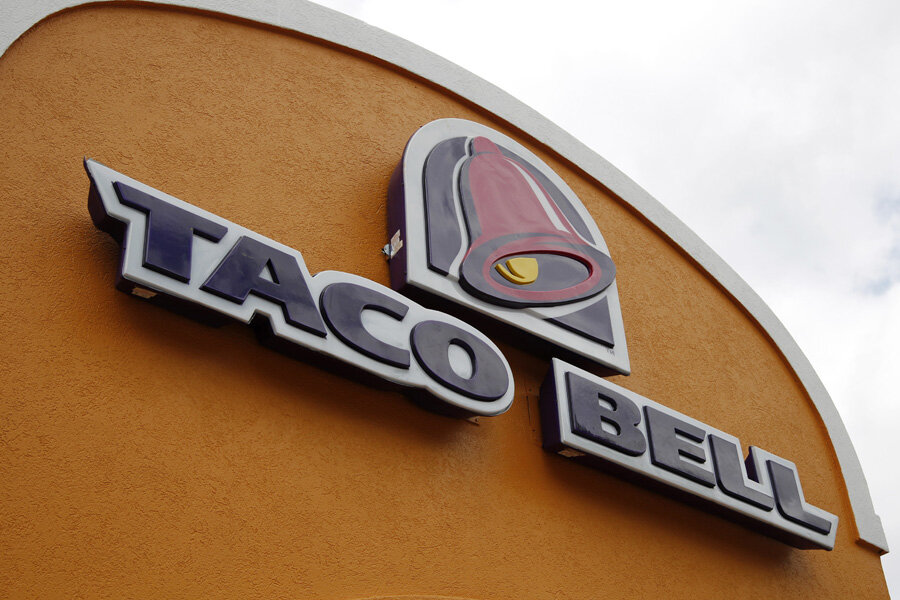Taco Bell expands trial of food delivery. Why more chains are coming to you.
Loading...
Taco Bell could be knocking at your door with burritos and chalupas.
The Mexican style fast food chain is testing food delivery with the on-demand delivery service DoorDash, Taco Bell announced Wednesday. The trial run will be available in more than 90 cities and over 200 restaurants in the Los Angeles, Orange County, San Francisco Bay, and Dallas areas. Taco Bell has been testing delivery with DoorDash in select cities and hopes that by expanding the trial, it will receive more customer feedback that will eventually help expand the service nationwide.
Taco Bell is the latest of several big names in the restaurant industry, including Chipotle, Burger King, and Dunkin' Donuts, that are testing the waters with food delivery.
The chain saw an opportunity to “further evolving the Taco Bell experience for customers” by testing out delivery service, CEO Brian Niccol said in a press release, adding that food delivery is the No. 1 request from customers. “Taco Bell has always been about value and convenience, and we believe delivery is the next step in catering to today’s on-demand culture that’s driving consumer behavior,” he said.
Why are so more and more companies suddenly so interested in food delivery? One possible reason is they are taking advantage of the decreasing amount of time people have to make food, opening an opportunity to market their brand to families, Kara Kaufman, press officer for Corporate Accountability International told The Christian Science Monitor in June. Delivery is another way for businesses to make money, though it only makes up a small portion of food orders at quick service restaurants. Only 3 percent of orders made between between May 2014 and May 2015 were for delivery, according to The NPD Group, a market research company. That doesn't mean the bulk of customers are eating in-house, however: the share of people ordering carry-out versus in the restaurant are almost identical at 38 percent and 39 percent, respectively.
Warren Solochek, NPD’s vice president of client development, was skeptical when he first heard the news of Taco Bell’s delivery trial run, he says in a phone interview. But after reading more about it, he said he realized the chain’s plan could work. The logistics behind it are pretty sound; Taco Bell is testing food delivery in urban areas, where people are concentrated in one area, and this trial with an already-established delivery service app will appeal to its large Millennial customer base.
“Millennials are used to this kind of service,” Mr. Solochek says. It appeals to a group of people who are used to ordering through a number of delivery services, such as GrubHub, because it is convenient. Taco Bell and other chains’ delivery service also caters to another growing demographic: people who work from home. It is a great service to offer to those workers because it saves them time, Solochek added. They do have to spend more money to have their food come to their homes, but they save time and don’t have to sacrifice their productivity.
What do fast food chains like Taco Bell need to do to make sure their delivery is smooth? Restaurants will need to improve their packaging so the food will stay hot, and guarantee times for when the food will come. “Guaranteeing delivery time is probably a better way to go for two reasons,” Solochek says. “It creates an incentive for people to use their service. That is a great promise to make, and if they live up to it, it garners all sorts of loyalty to customers.” Chains and independent restaurants will also need to get their technology up-to-date so they can handle high demand. One group of restaurants that have online delivery down to a science is pizza places, like Domino’s Pizza and Papa John’s, he adds. Their technology is advanced and has helped make ordering delivery on a computer or app simple and successful.
“I think [delivery] is going to be a growing trend," Solochek says. "As more chains try it out, and more chains see success with it, those who aren’t already participating are going to look at it very closely because it appeals to a very basic need, which is ‘I need to get my food fast because I’m hungry.’”






